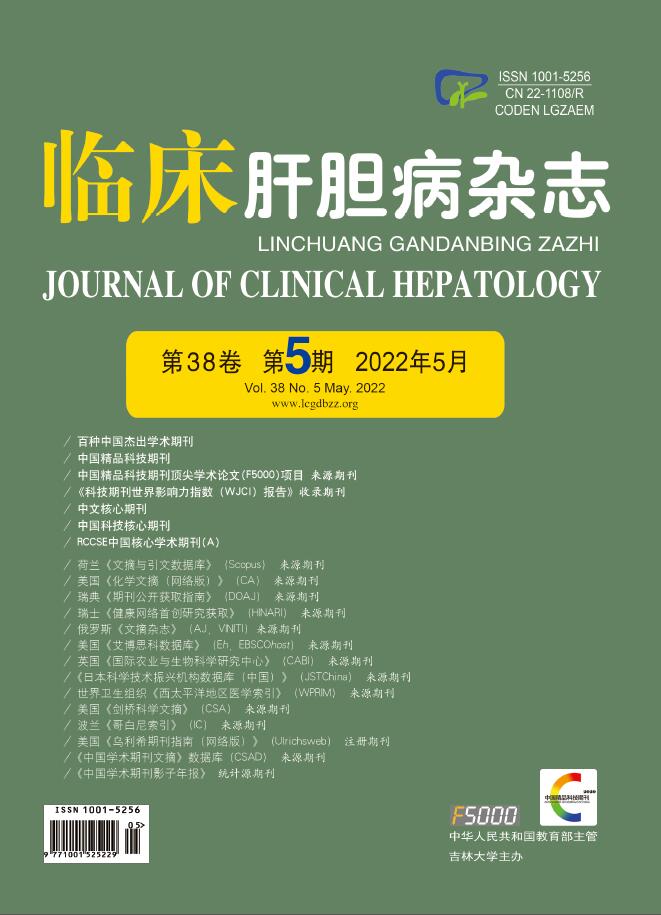| [1] |
CHEN QQ, LU HH, SUN FF, et al. Progress on chronic drug-induced liver injury[J/CD]. Chin J Liver Dis(Electronic Edition), 2020, 12(4): 38-42. DOI: 10.3969/j.issn.1674-7380.2020.04.007. |
| [2] |
Drug-induced Liver Disease Study Group, Chinese Society of Hepatology, Chinese Medical Association. Guidelines for the management of drug-induced liver injury[J]. J Clin Hepatol, 2015, 31(11): 1752-1769. DOI: 10.3969/j.issn.1001-5256.2015.11.002. |
| [3] |
VILLANUEVA-PAZ M, MORÁN L, LÓPEZ-ALCÁNTARA N, et al. Oxidative stress in drug-induced liver injury (DILI): From mechanisms to biomarkers for use in clinical practice[J]. Antioxidants (Basel), 2021, 10(3): 390. DOI: 10.3390/antiox10030390. |
| [4] |
DEVARBHAVI H, AITHAL G, TREEPRASERTSUK S, et al. Drug-induced liver injury: Asia Pacific Association of Study of Liver consensus guidelines[J]. Hepatol Int, 2021, 15(2): 258-282. DOI: 10.1007/s12072-021-10144-3. |
| [5] |
AMACHER DE. Female gender as a susceptibility factor for drug-induced liver injury[J]. Hum Exp Toxicol, 2014, 33(9): 928-939. DOI: 10.1177/0960327113512860. |
| [6] |
SHEN T, LIU Y, SHANG J, et al. Incidence and etiology of drug-induced liver injury in mainland China[J]. Gastroenterology, 2019, 156(8): 2230-2241. e11. DOI: 10.1053/j.gastro.2019.02.002. |
| [7] |
|
| [8] |
OZAWA S, MIURA T, TERASHIMA J, et al. Recent progress in prediction systems for drug-induced liver injury using in vitro cell culture[J]. Drug Metab Lett, 2021, 14(1): 25-40. DOI: 10.2174/1872312814666201202112610. |
| [9] |
ZEN Y, YEH MM. Checkpoint inhibitor-induced liver injury: A novel form of liver disease emerging in the era of cancer immunotherapy[J]. Semin Diagn Pathol, 2019, 36(6): 434-440. DOI: 10.1053/j.semdp.2019.07.009. |
| [10] |
GANEY PE, LUYENDYK JP, MADDOX JF, et al. Adverse hepatic drug reactions: Inflammatory episodes as consequence and contributor[J]. Chem Biol Interact, 2004, 150(1): 35-51. DOI: 10.1016/j.cbi.2004.09.002. |
| [11] |
WANG X, ZHANG L, JIANG Z. T-helper cell-mediated factors in drug-induced liver injury[J]. J Appl Toxicol, 2015, 35(7): 695-700. DOI: 10.1002/jat.3115. |
| [12] |
THOMSON PJ, KAFU L, MENG X, et al. Drug-specific T-cell responses in patients with liver injury following treatment with the BACE inhibitor atabecestat[J]. Allergy, 2021, 76(6): 1825-1835. DOI: 10.1111/all.14652. |
| [13] |
JIANG ML, XU F, HU JL, et al. Clinical value of IL-6, CRP, PCT and endotoxin in predicting the risk of liver failure with bacterial infection[J]. Chin J Nosocomiol, 2020, 30(20): 3062-3065. DOI: 10.11816/cn.ni.2020-193056. |
| [14] |
ROTH RA, MAIURI AR, GANEY PE. Idiosyncratic drug-induced liver injury: Is drug-cytokine interaction the linchpin?[J]. J Pharmacol Exp Ther, 2017, 360(2): 461-470. DOI: 10.1124/jpet.116.237578. |







 DownLoad:
DownLoad: